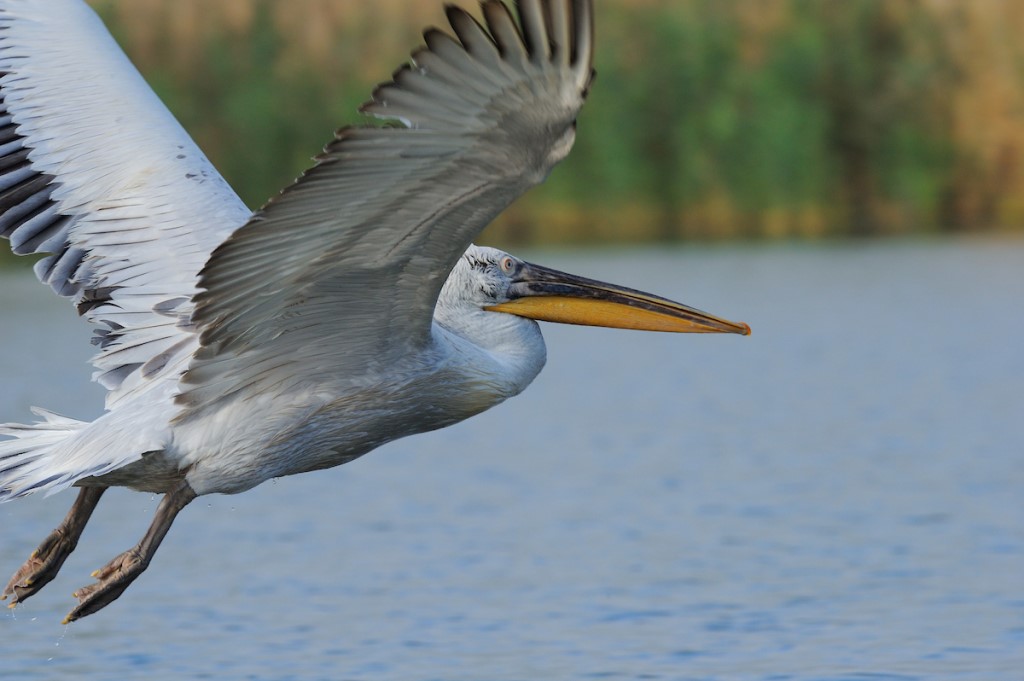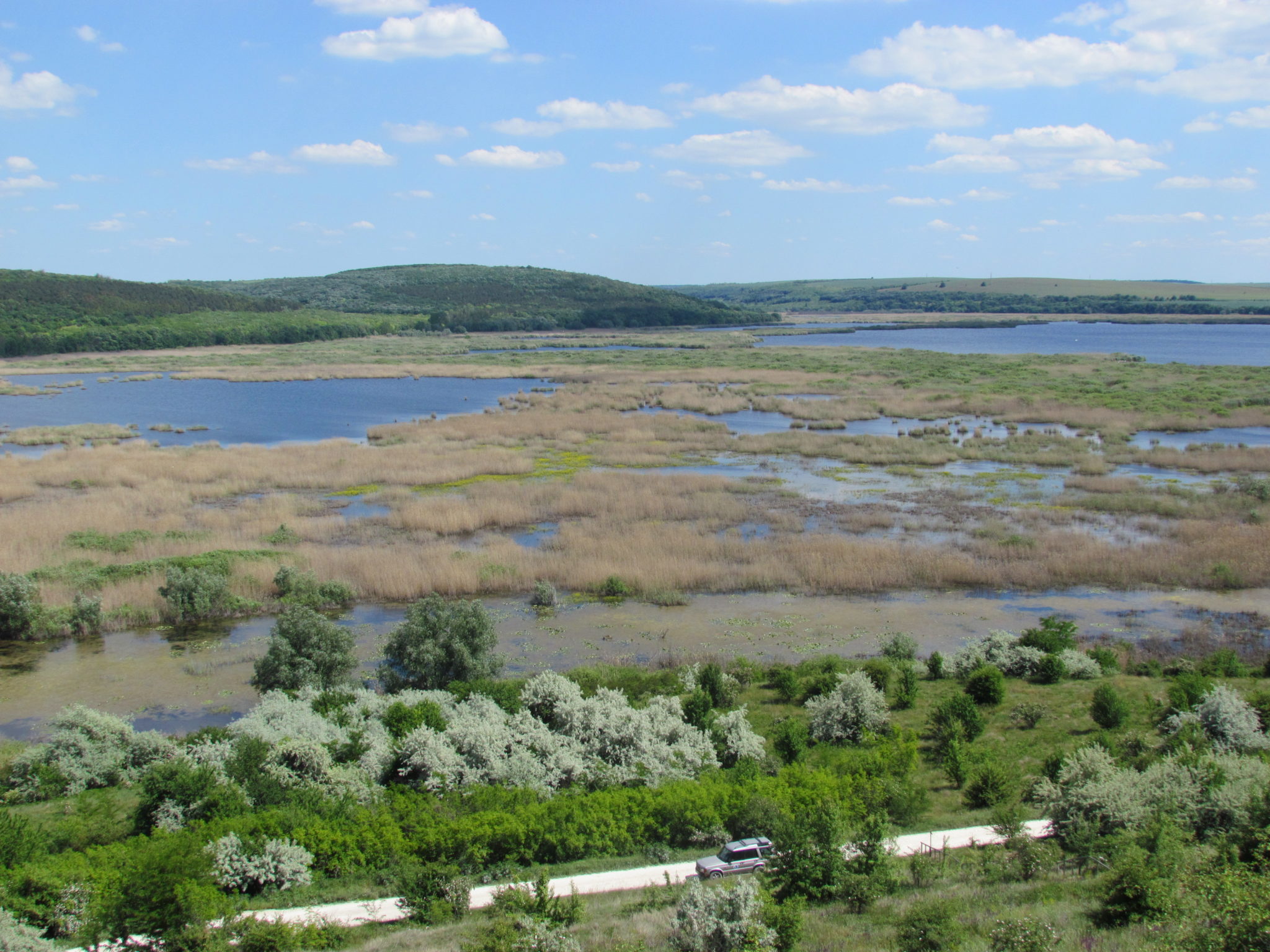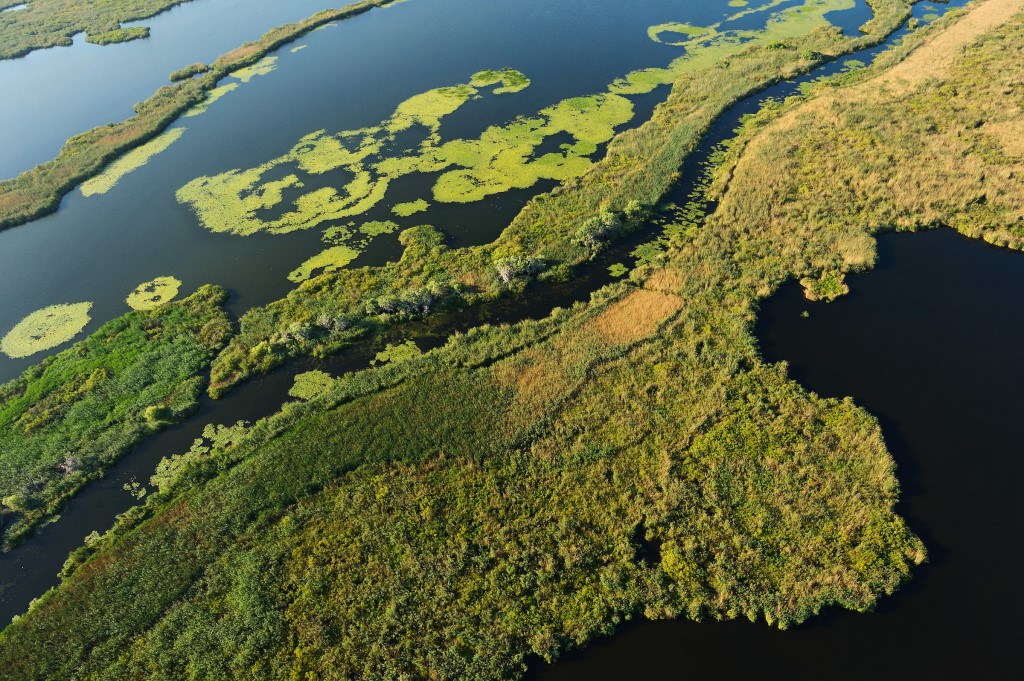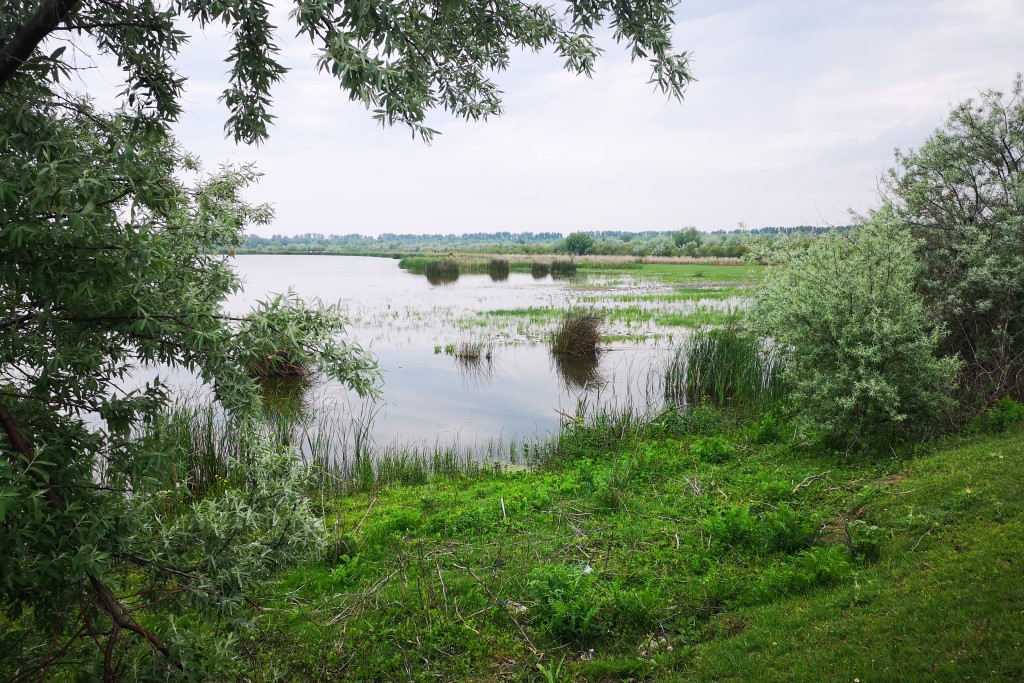Project activities will be carried out at 27 project sites in Romania, Bulgaria, Greece, as well as two in Ukraine. These encompass a wide range of landscapes, including lakes, islands, wetlands, pastures, marshes and bogs.
In Greece, Bulgaria and Romania the Dalmatian pelican has full legal protection, extending to nestlings, nesting sites and fledged birds. National Action Plans have been developed and implemented in Bulgaria and Romania. In all three countries all breeding and roosting sites, as well as the most important feeding habitats, are designated Important Bird Areas and Special Protection Areas.
Project countries

Greece
Greece hosts around a third of the global population of Dalmatian pelicans in six breeding colonies (Prespa, Chimaditis, Amvrakikos, Messolonghi, Kerkini and Karla). Small Prespa Lake hosts the largest colony in the world, with around 1200 breeding pairs. Project sites include the Amvrakikos Gulf and the Messolonghi Wetlands.
In Greece the Dalmatian Pelican is a local resident and partial migrant. It breeds regularly in Prespa and the Amvrakikos Gulf, while the species has started to form breeding colonies in the Messolonghi Wetlands and in Lake Chimaditis. Some pelicans are wintering individuals in these project sites. In Greece there is an established national working group for Dalmatian pelican conservation, consisting of the management bodies of relevant protected areas, the Hellenic Ornithological Society, and the Society for the Protection of Prespa.

Bulgaria
In Bulgaria the Dalmatian Pelican is a breeding, migrating and wintering species, with the total national population estimated at between 70 and 120 pairs. The species breeds regularly in Srebarna Lake. In 2016 and 2017 seven pairs of pelicans also nested on one of the two artificial wooden platforms built for them in the Peschina Marsh, located in the Persina Nature Park.
In Bulgaria 10 sites are included in the Pelican Way of LIFE project – Belene Island Complex, Straldzha Complex, Srebarna Lake, Ovtcharitsa Reservoir, Yazovir Rozov Kladenets, Shabla Lake Complex, Burgasko Lake, Mandra-Poda Complex, Atanasovsko Lake and Studen Kladenets.

Romania
There are currently 7 sites in Romania where the Dalmatian pelican has bred recently, but two of these are rarely used. They are located in the Danube Delta, only Lake Tasaul is on the Black Sea coast. The total breeding population is estimated at 300 to 350 pairs. The 15 project sites in Romania include the Mostistea Valley, Lower Olt Valley, Olt-Danube Confluence, Lakes Calarasi, Dunareni, Galatui, Suhaia, Bugeac, Oltina, Tasaul-Corbu, Danube Islands, Jiu-Danube Confluence, Danube Delta and Razim-Sinoe Complex, Balta Mica a Brailei, Bistret.
In Romania the species is resident and a partial migrant. It breeds in the Danube Delta and in the vicinity, while adults outside of the breeding season and immature birds disperse along the Lower Danube, making use of the large lakes and wetlands for feeding and roosting, in congregations of up to several hundred individuals.

Ukraine
In recent years the Ukrainian part of the Danube Delta has seen up to 150 wintering individuals. Around 30 Dalmatian pelicans are estimated to regularly breed in the country, while breeding attempts have also been made on the Ukrainian side of the Danube Delta Biosphere Reserve, where the species roosts and forages. Project activities involve two Ukrainian sites – Kartal Lake and the Danube Biosphere Reserve.